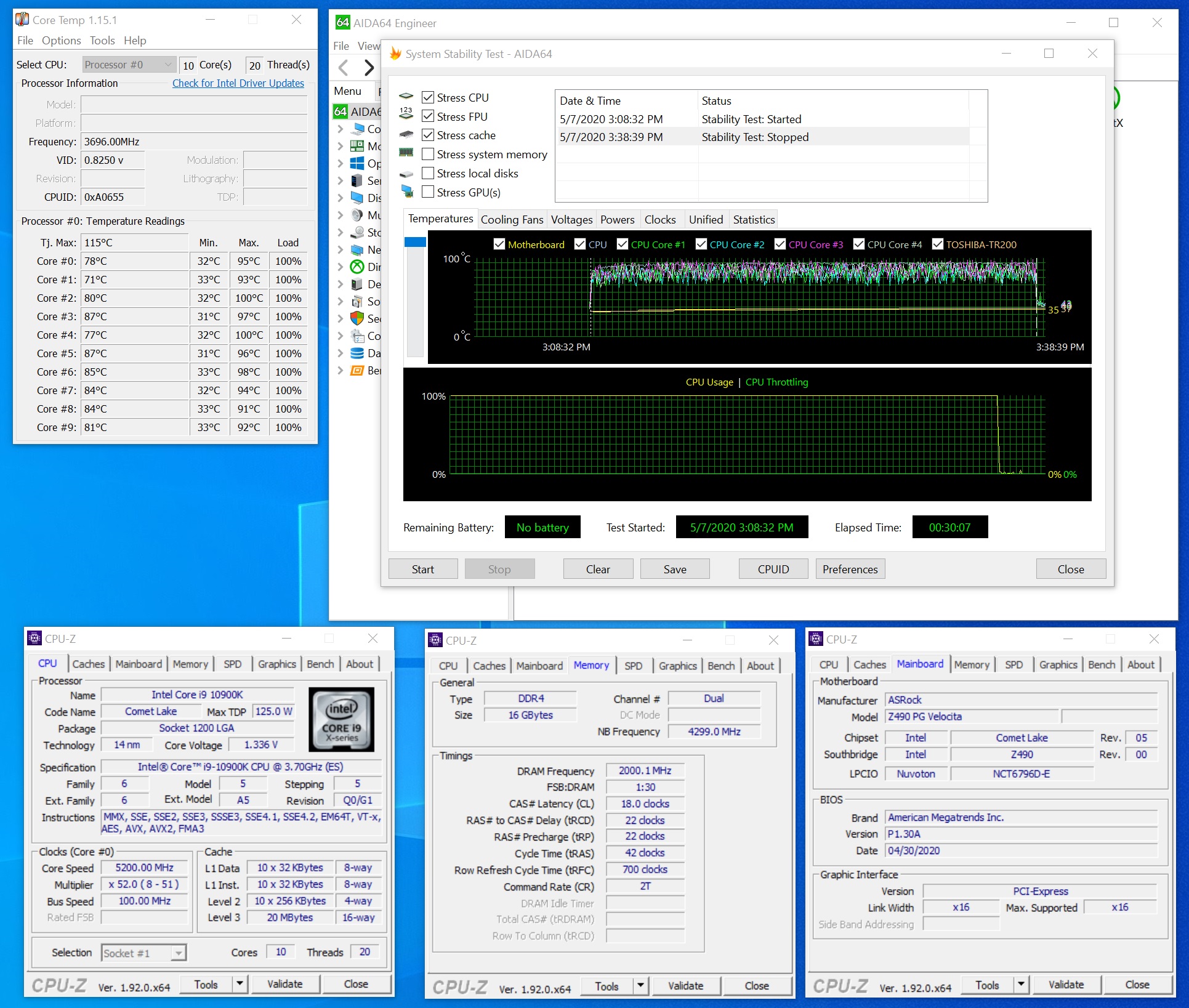Why you can trust Tom's Hardware
All standard benchmarks and power tests are performed using the CPU’s stock frequencies (including stock Thermal Velocity Boost), with all power-saving features enabled. Optimized defaults are set in the BIOS and the memory is set using the XMP profiles. For this baseline testing, Windows is set to High Performance (power testing uses Balanced so the PC idles properly).
*Due to unforeseen circumstances, the Asus ROG Strix Maximus XII Hero was run using Intel’s power limits whereas the other boards had more freedom to boost longer/higher. This result will be updated in future Z490 motherboard reviews. But this does also give us a good baseline to show what board partners were able to deliver on top of Intel’s spec.
Synthetic Benchmarks
Synthetics are a great tool to figure out if a board is running out of spec, as identical settings should produce extremely similar performance results. Advanced memory timings are the one place where motherboard makers can still optimize for either stability or performance though, and those settings can impact some testing.
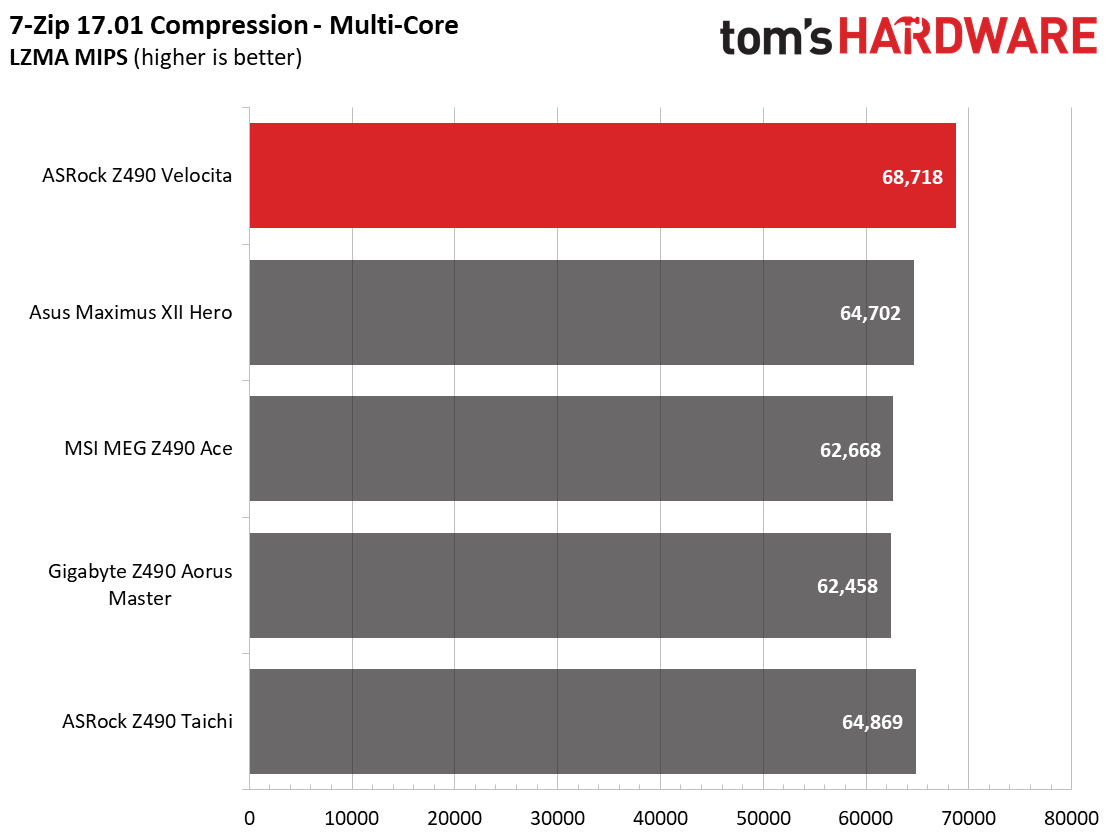
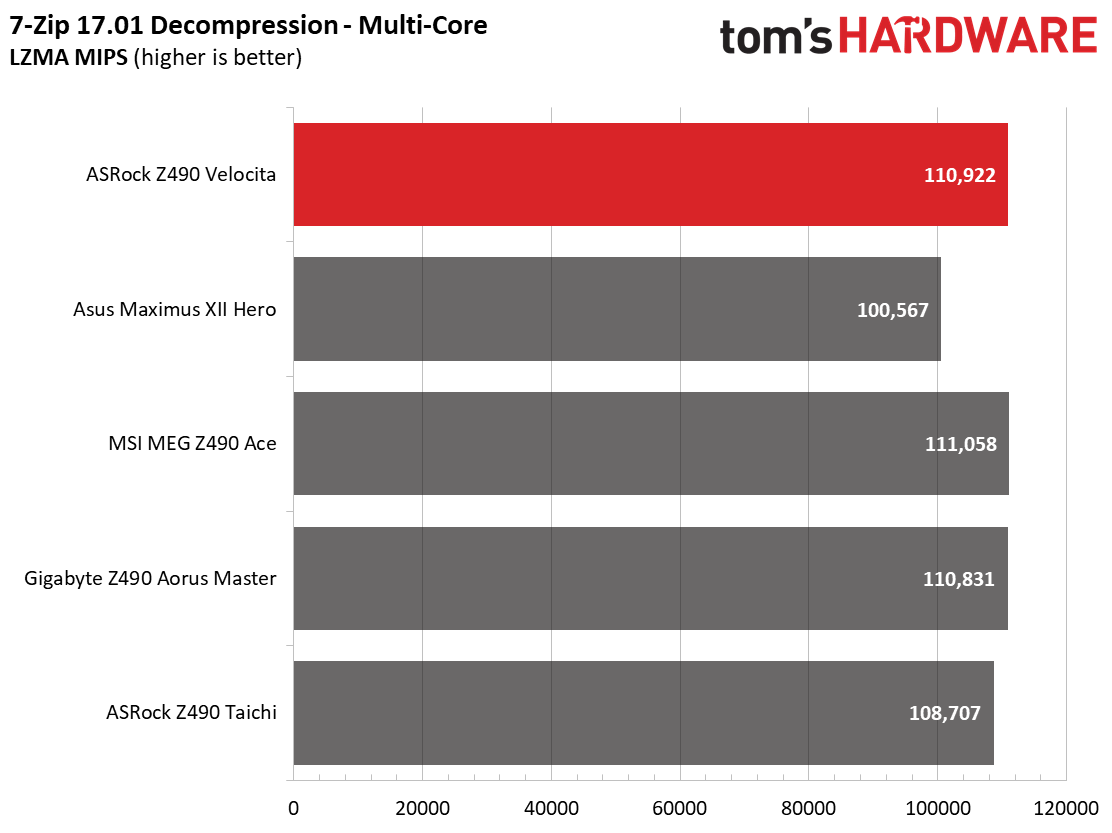

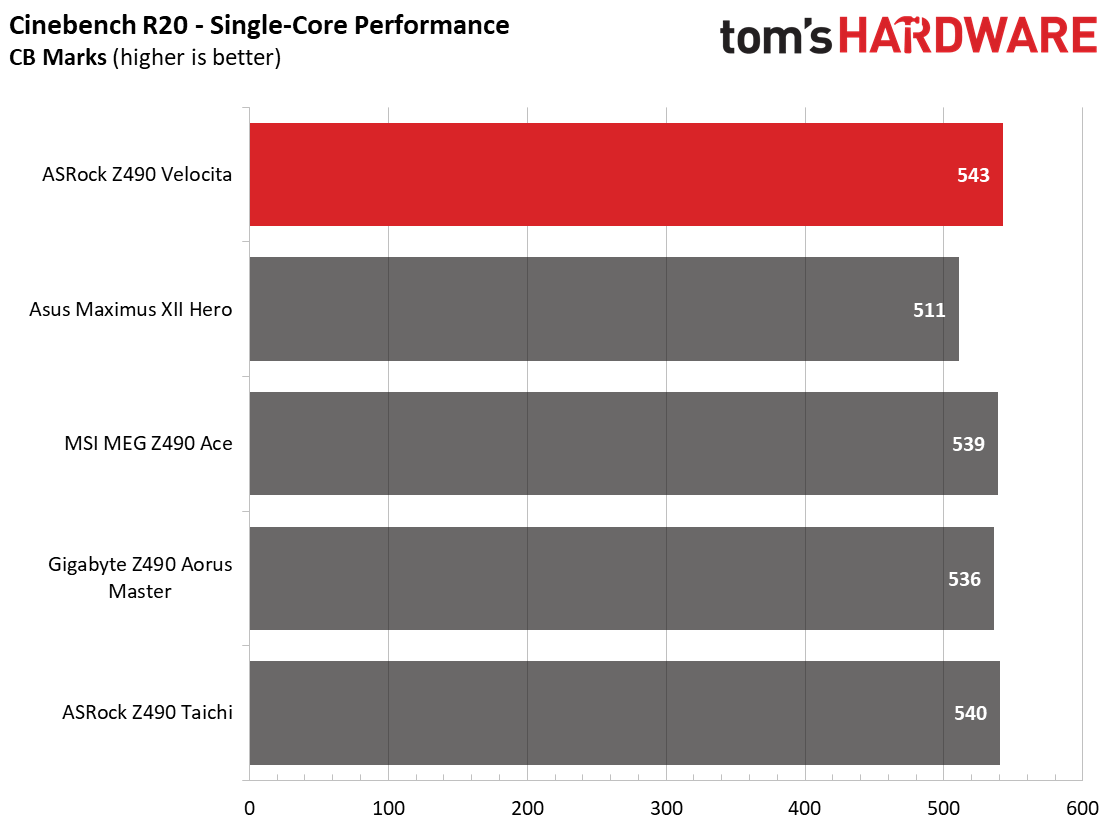
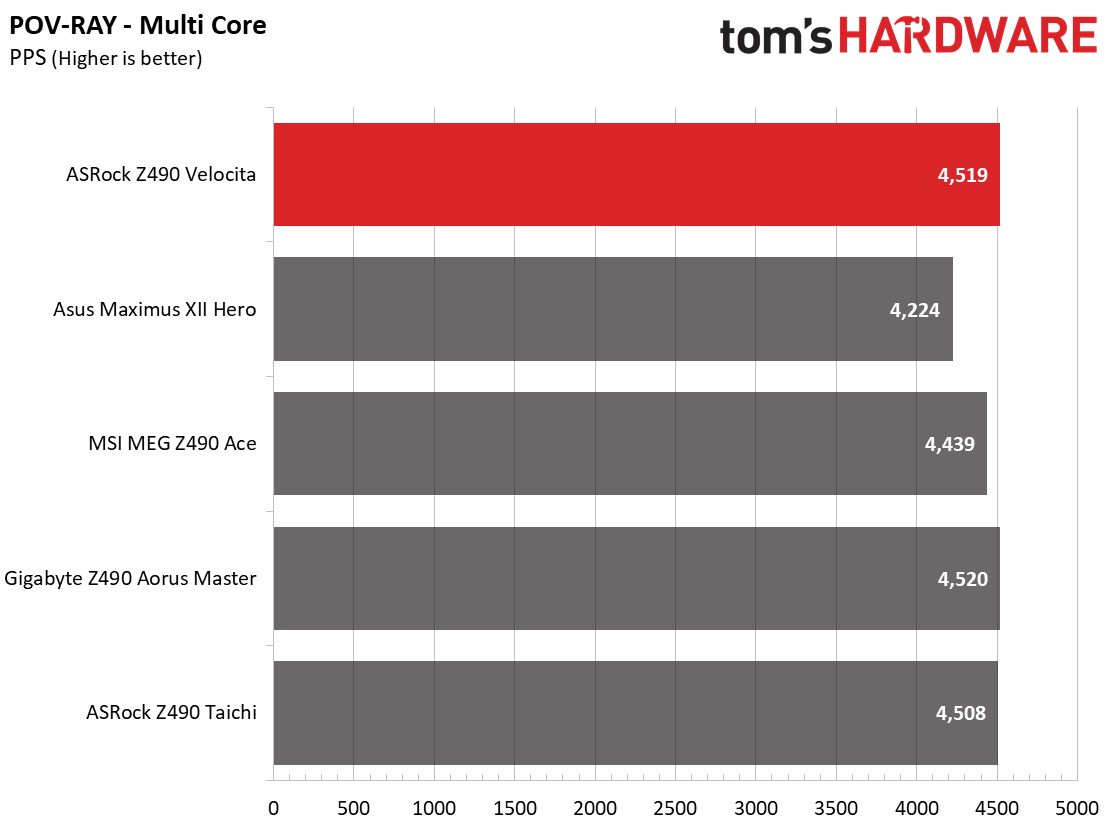
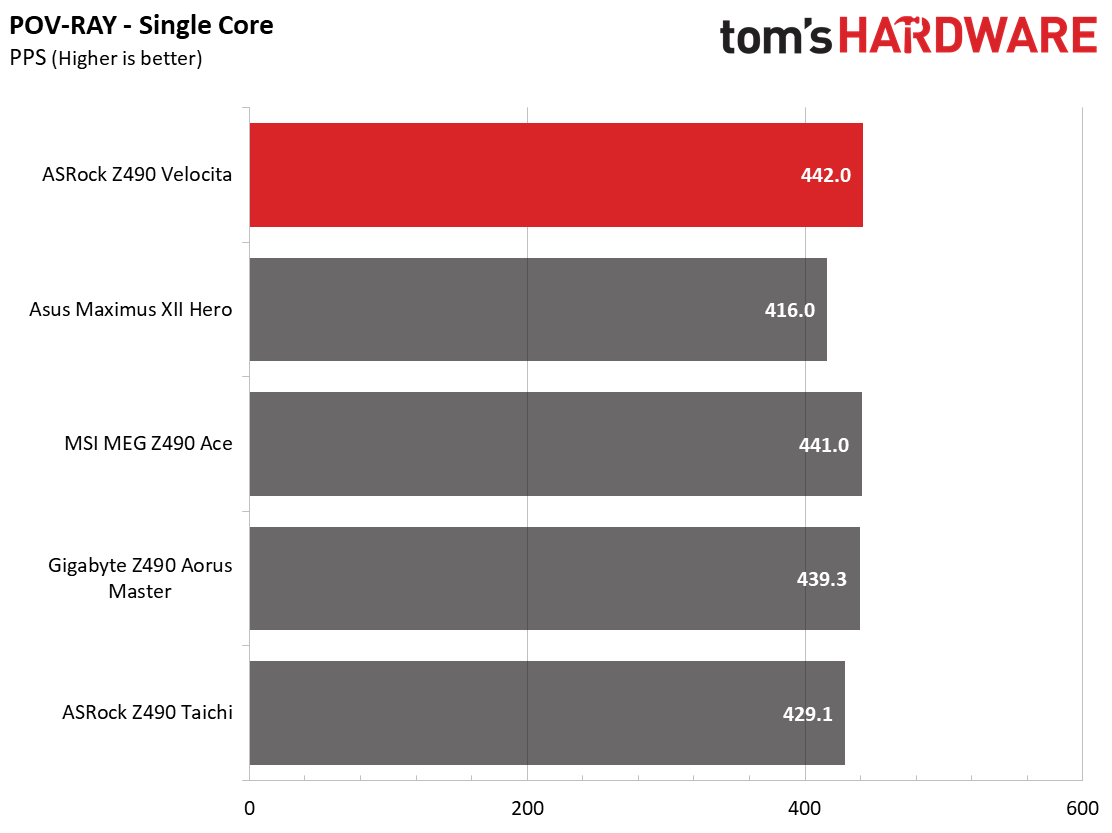
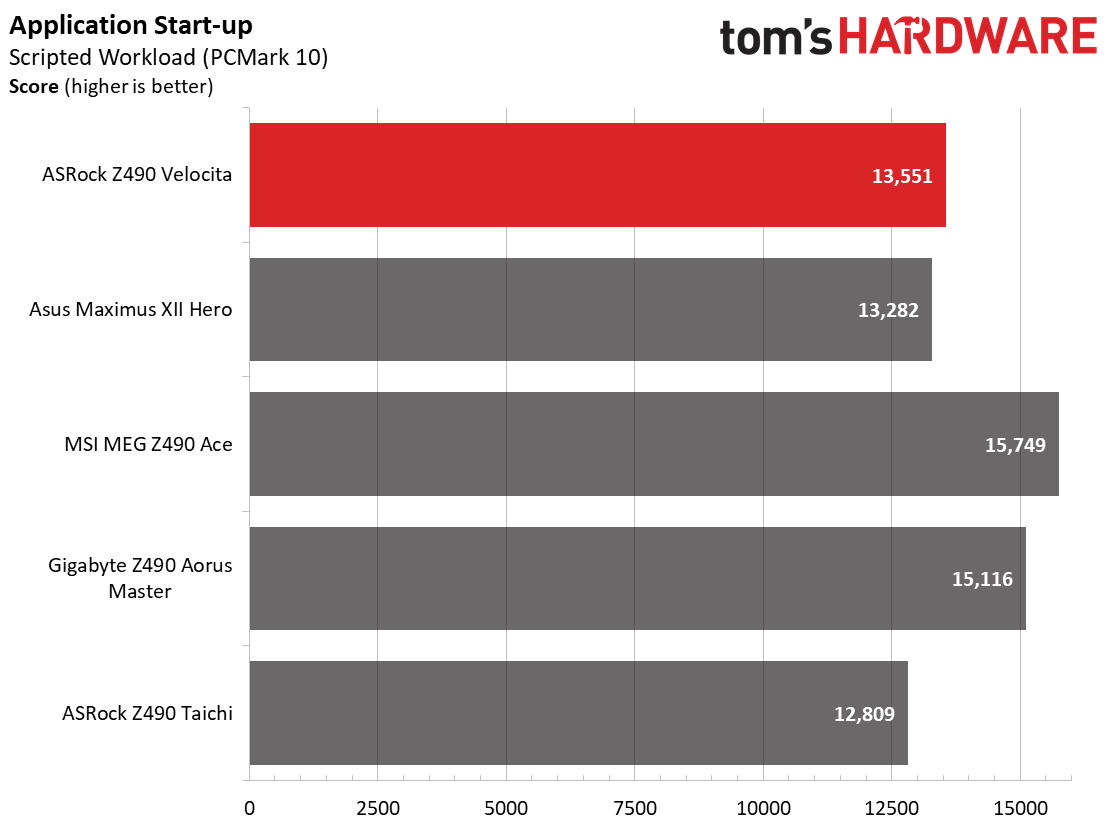
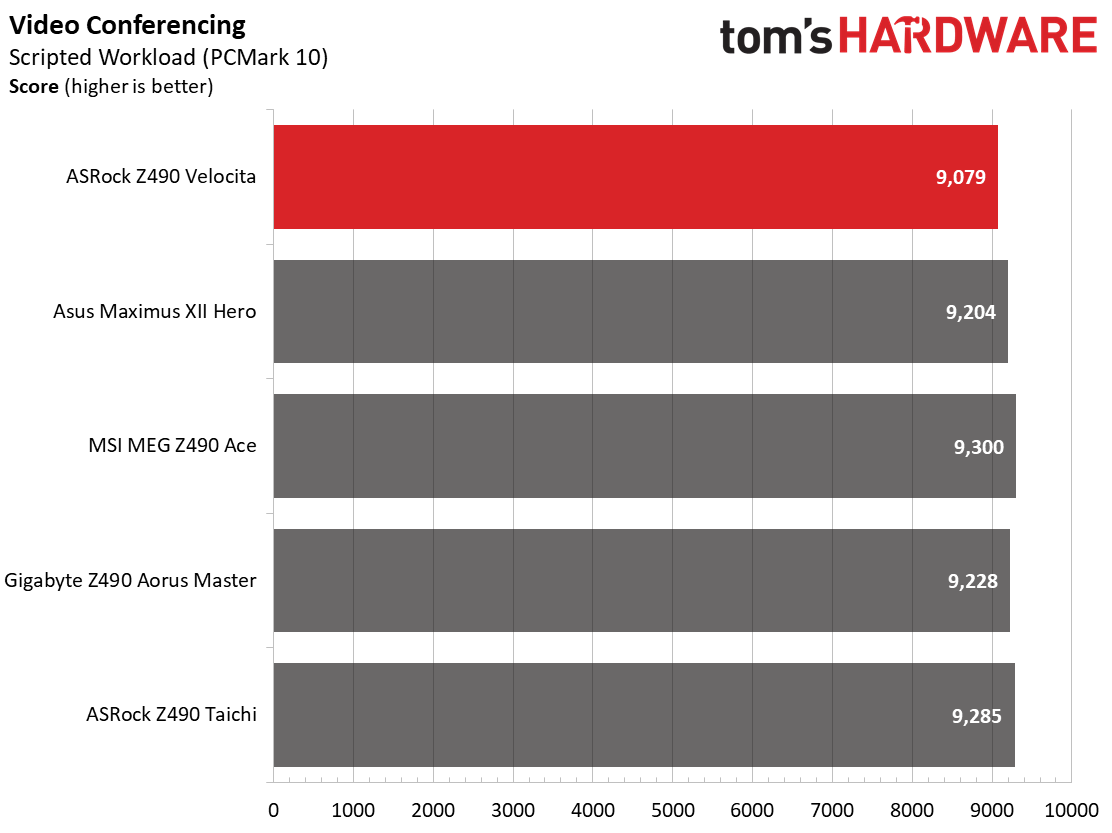
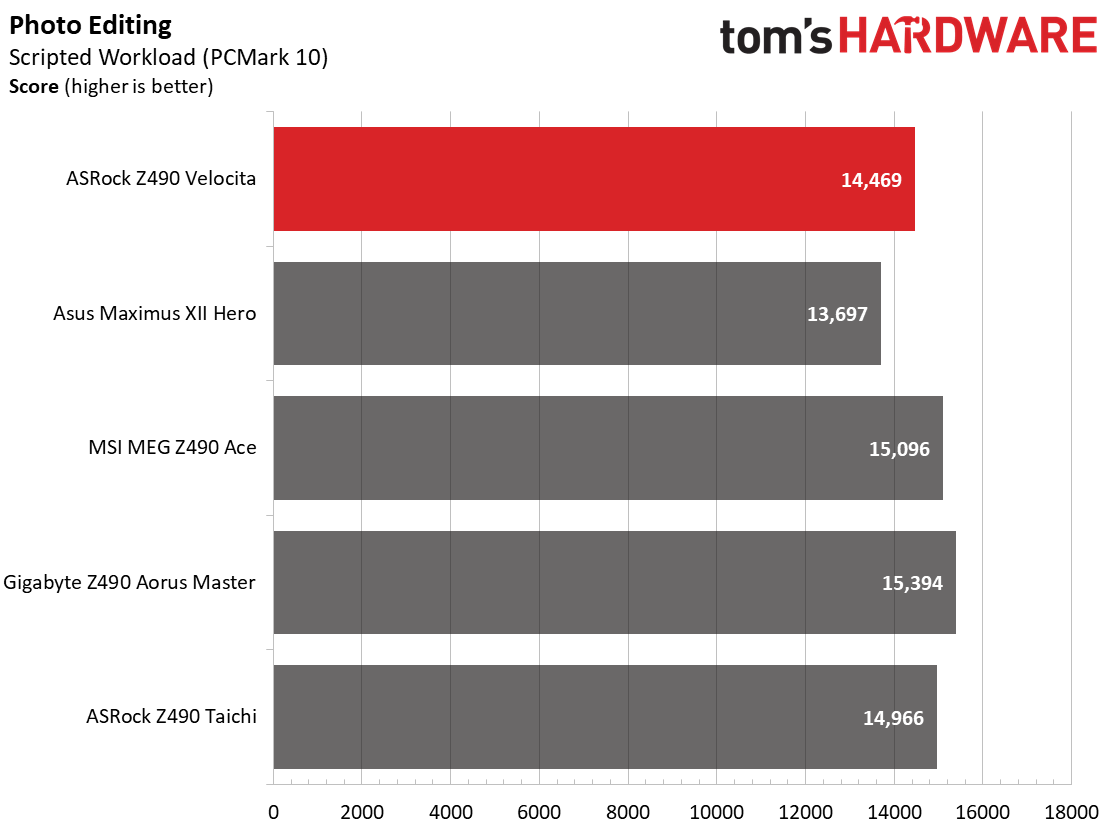
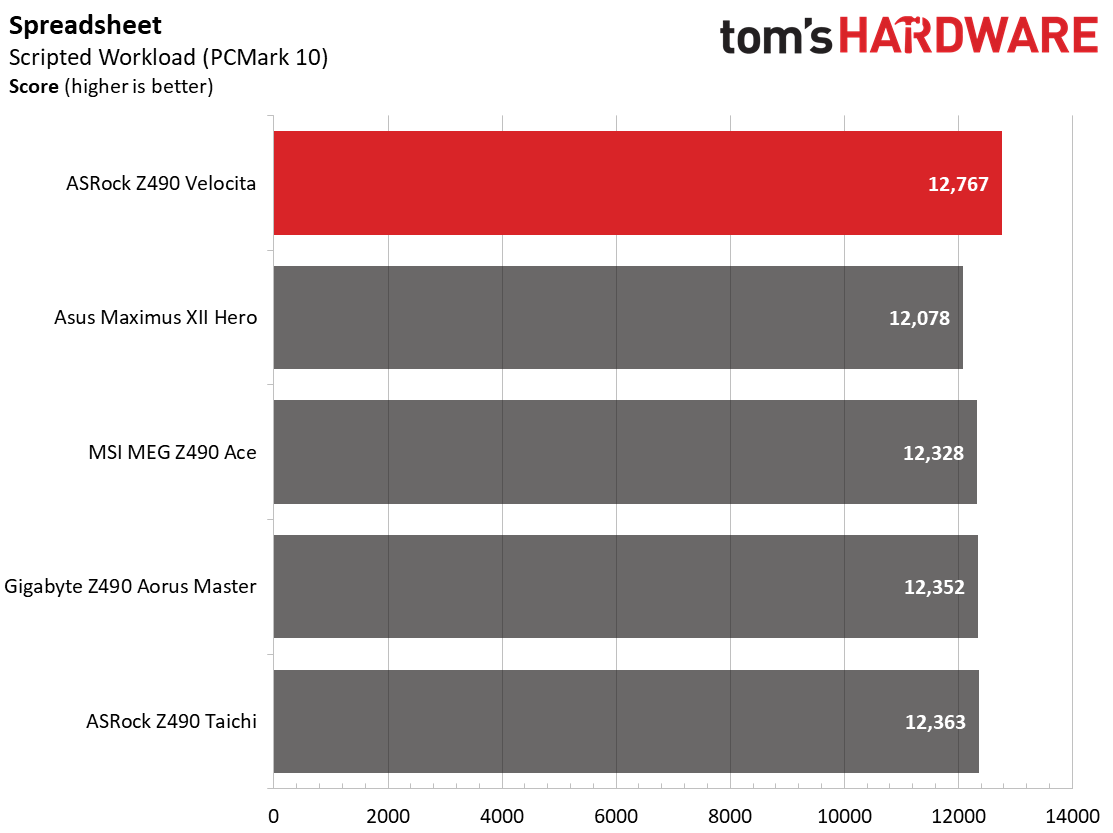
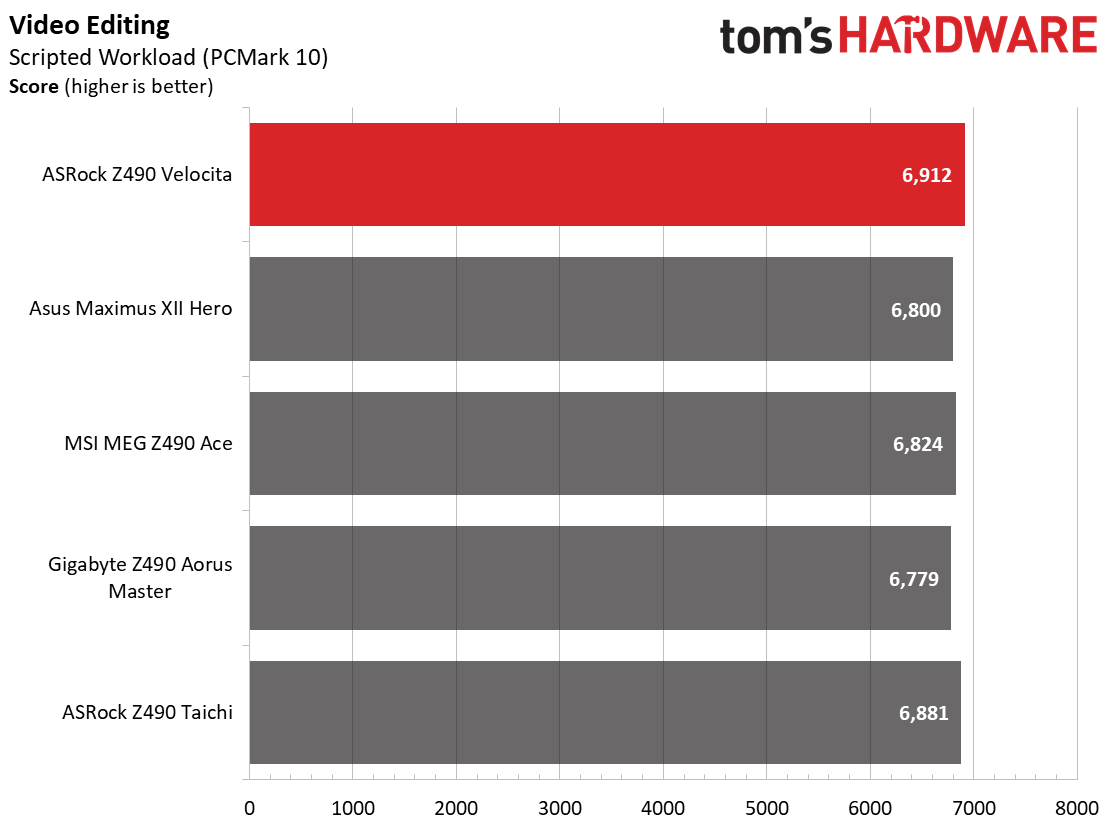
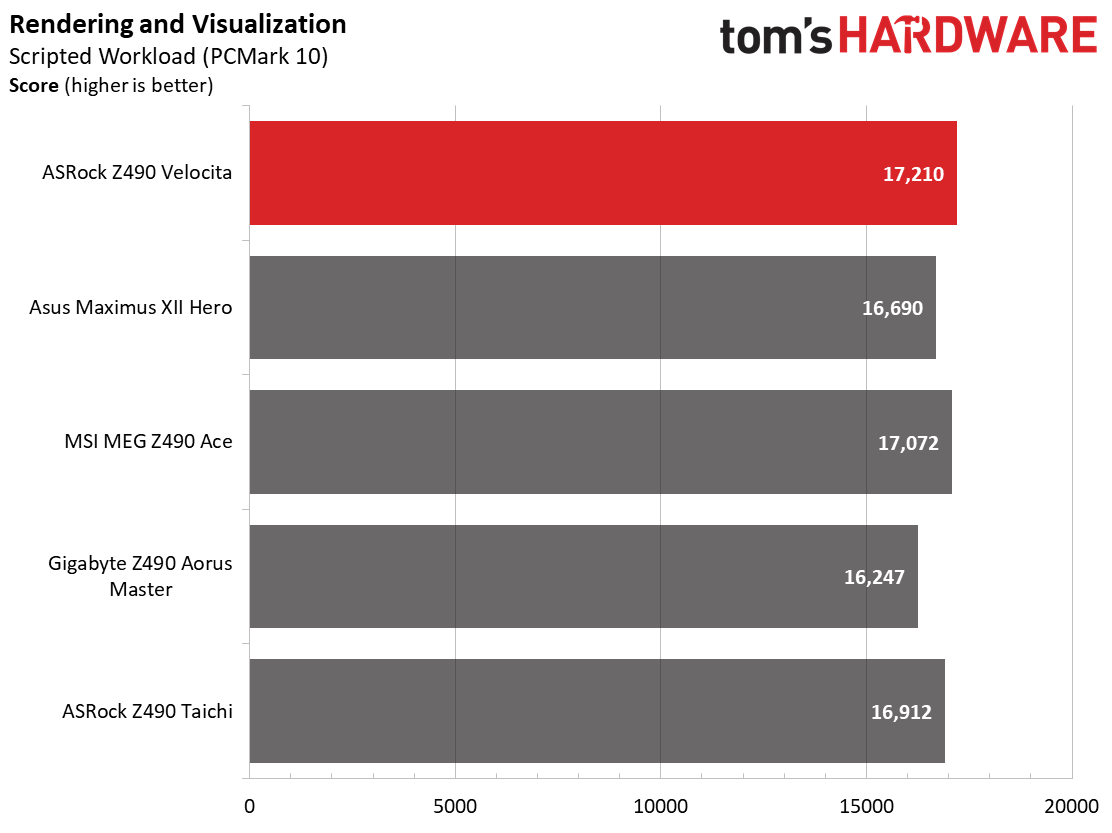
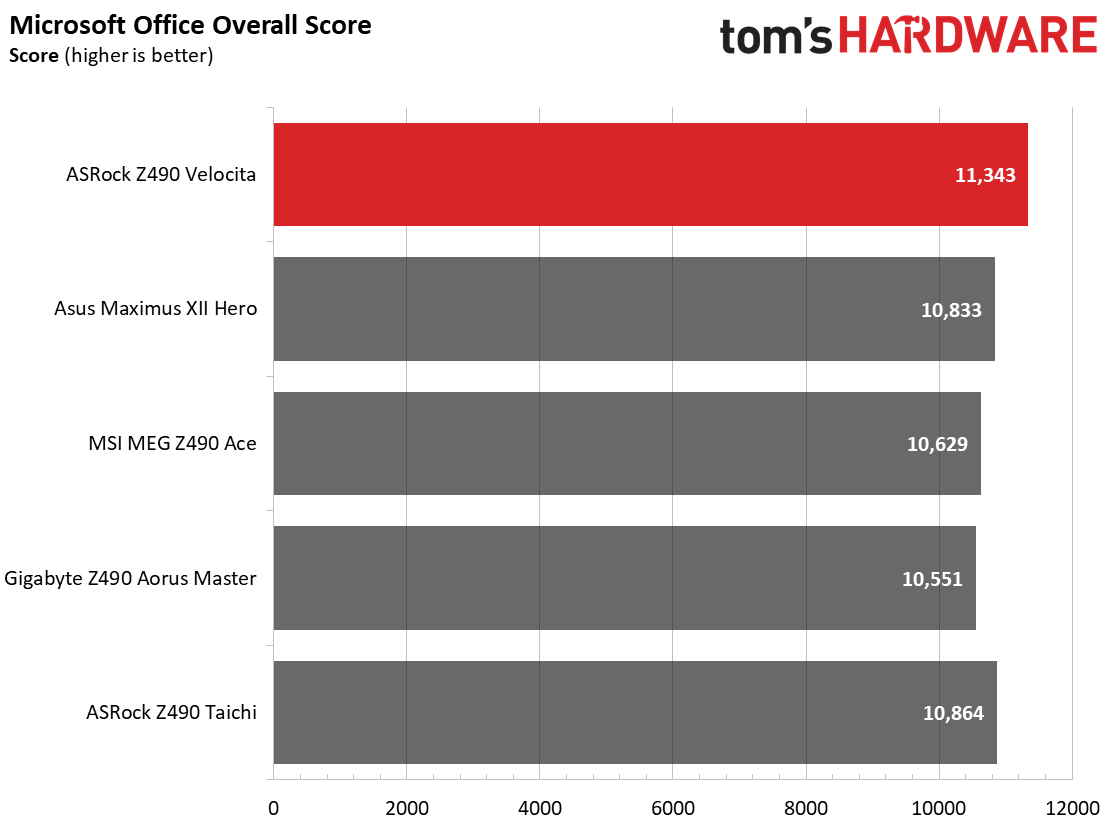

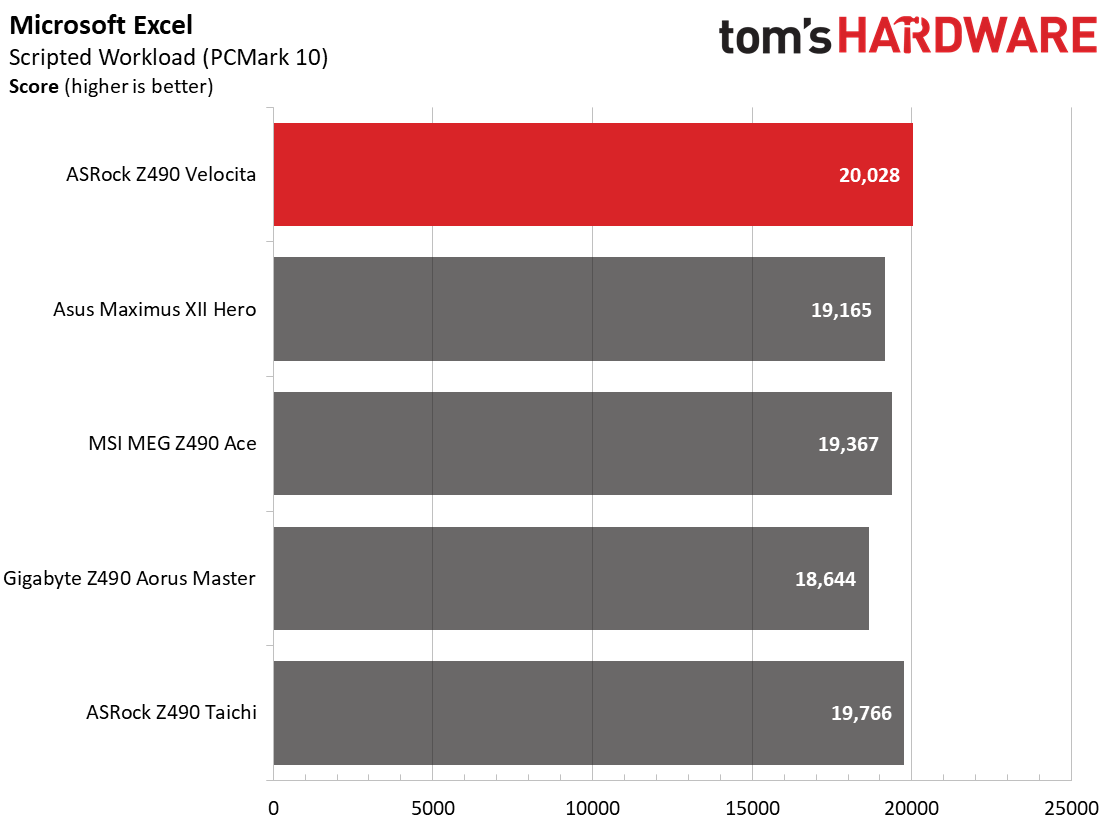

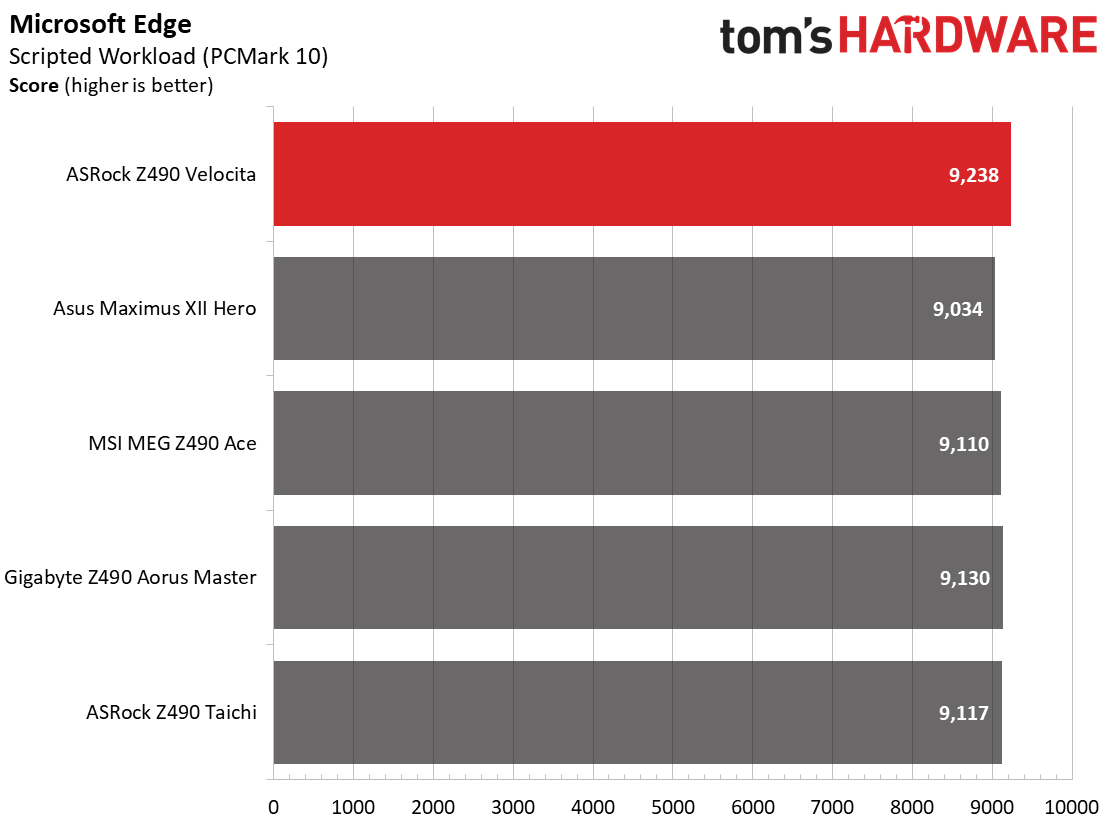
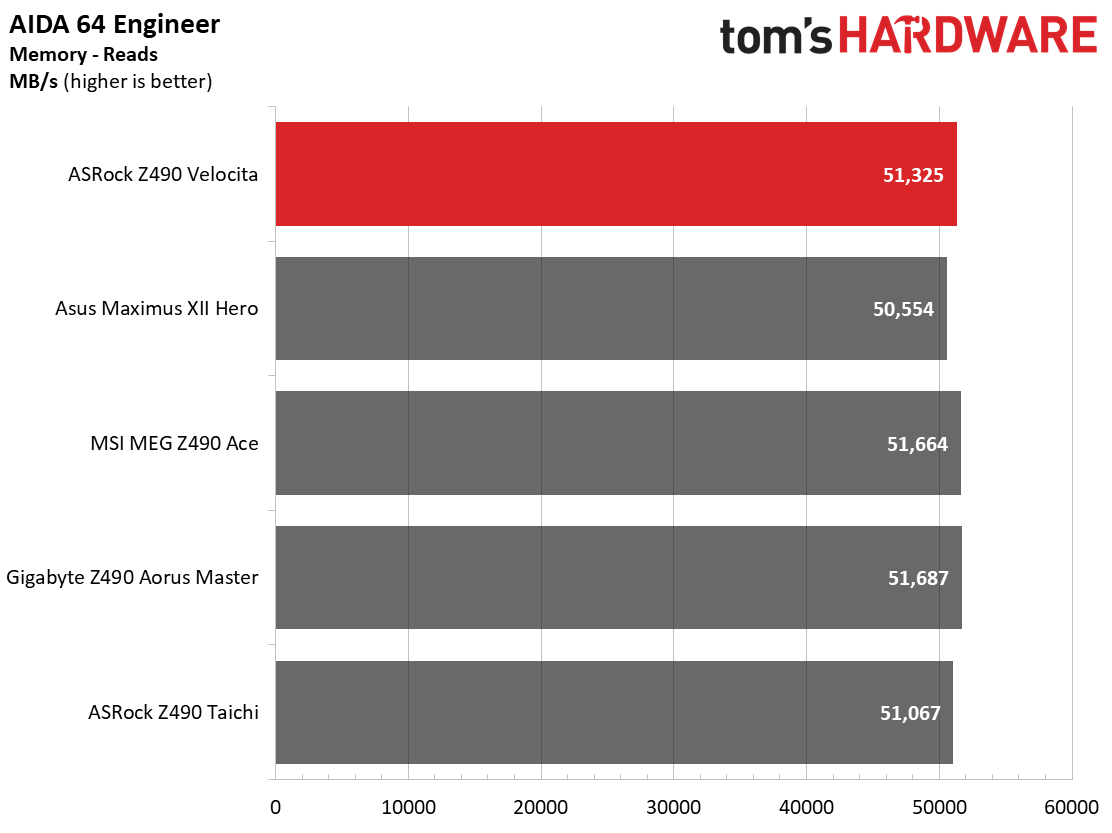
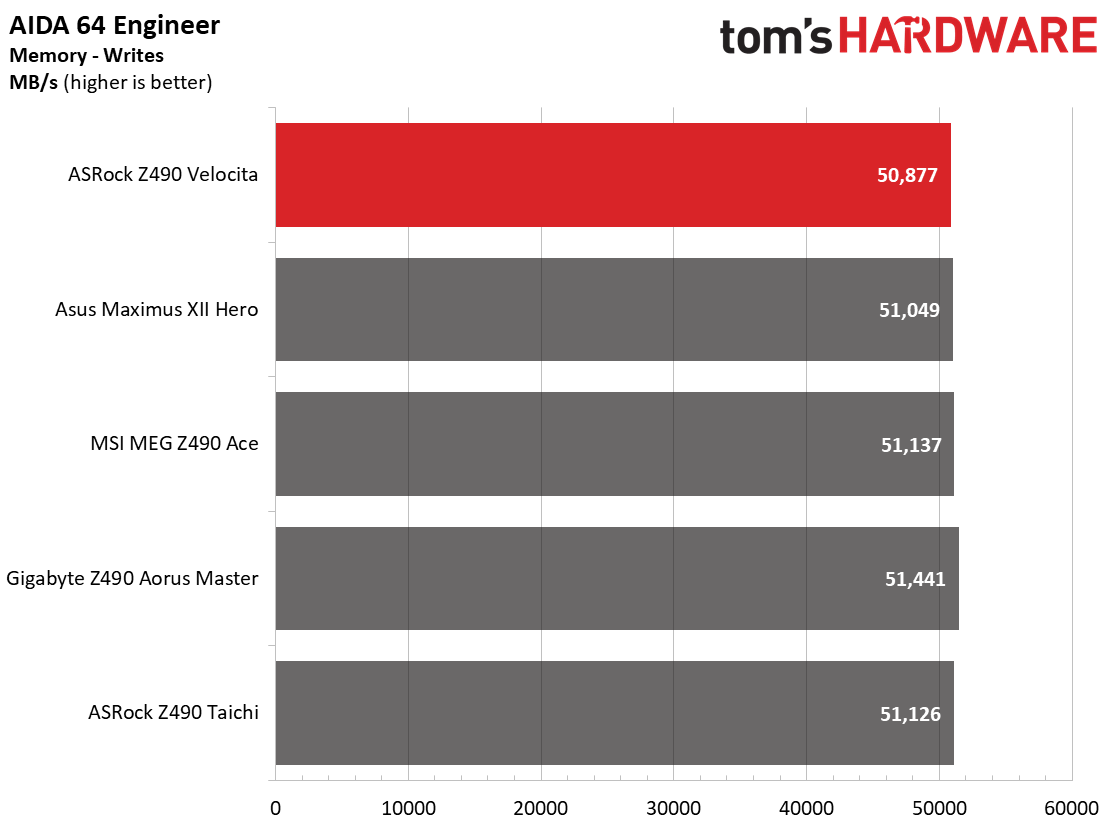
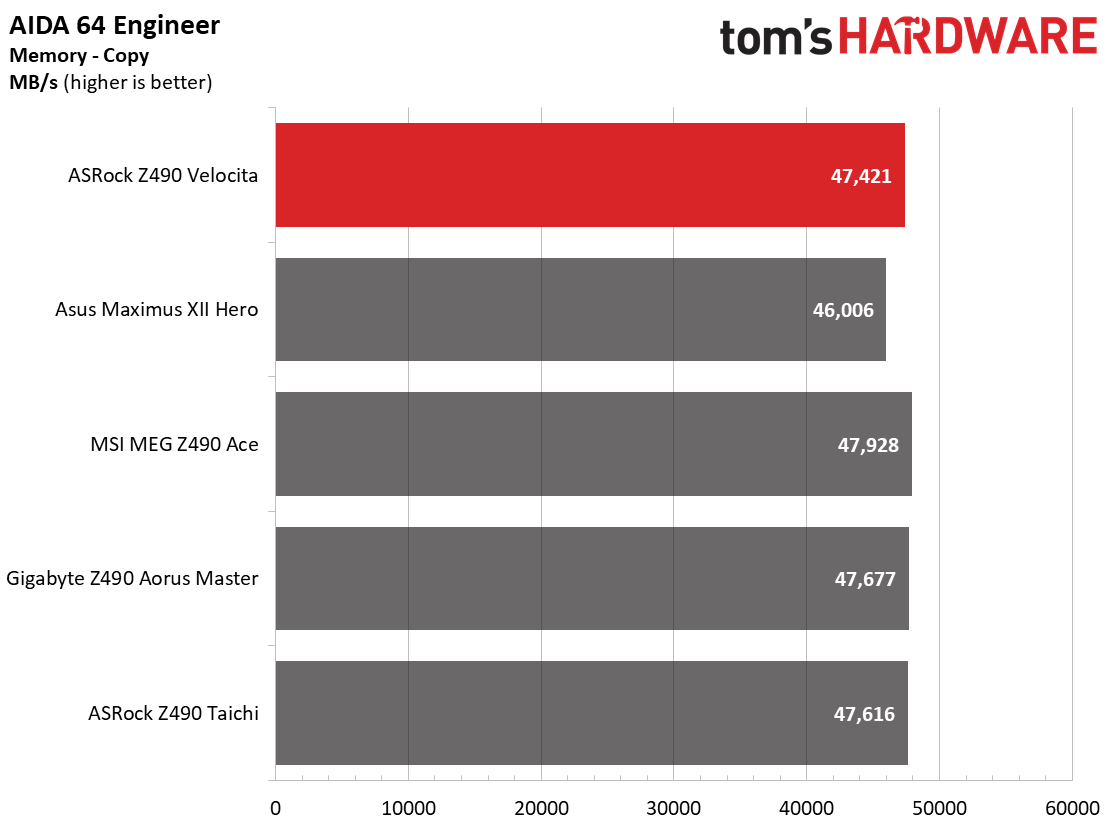

In our synthetic set of tests, the ASRock performed well, leading the pack in some tests and mixing in with others. All results were within general run variance, outside of perhaps the MS Office Application start-up test where ASRock’s board tested a bit slower. Out of the box, the ASRock boosts to 4.9 GHz with all cores and threads and holds there, whereas the other boards tend to drop back to 4.8 GHz, more closely following the Intel specification.
Timed Applications
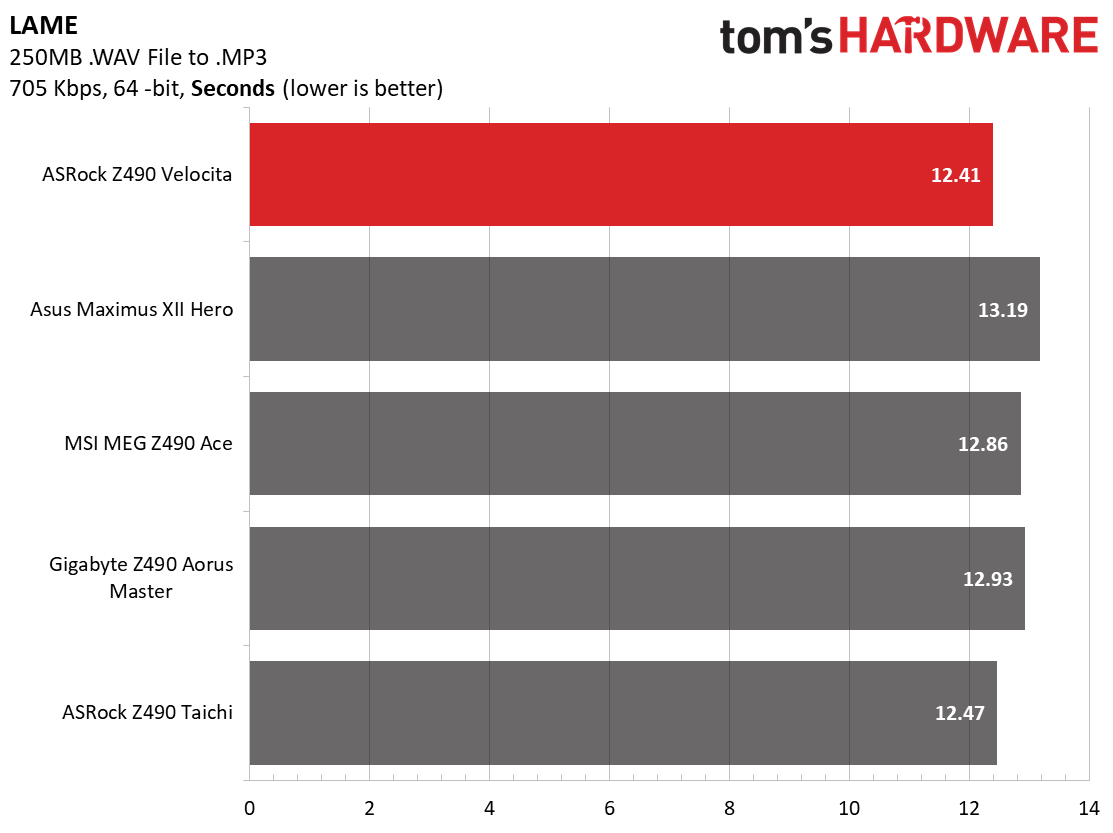


When looking into our timed applications including Corona (Ray Tracing), Handbrake (transcoding), and LAME (encoding), for the most part we again see parity across the boards. The Velocita was a few seconds faster in Handbrake due to the increased all cores/threads clocks, but otherwise ran these just as fast as the other boards.
3D Games and 3DMark

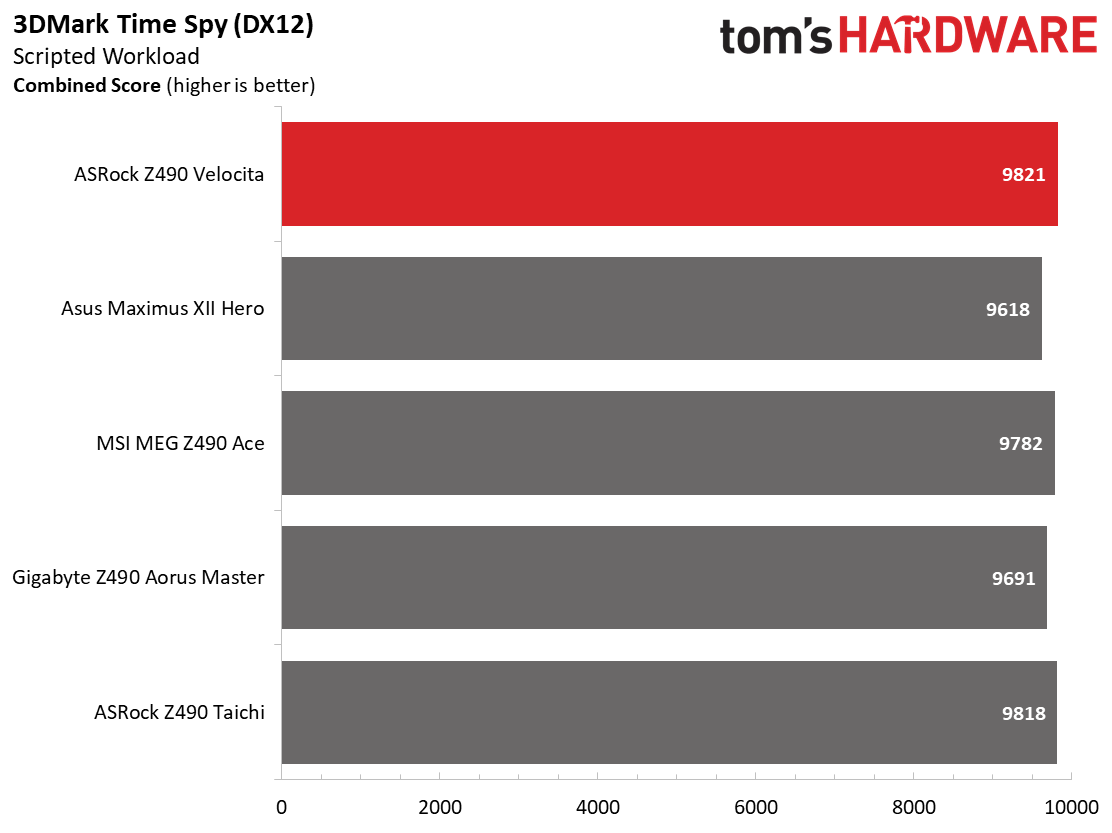
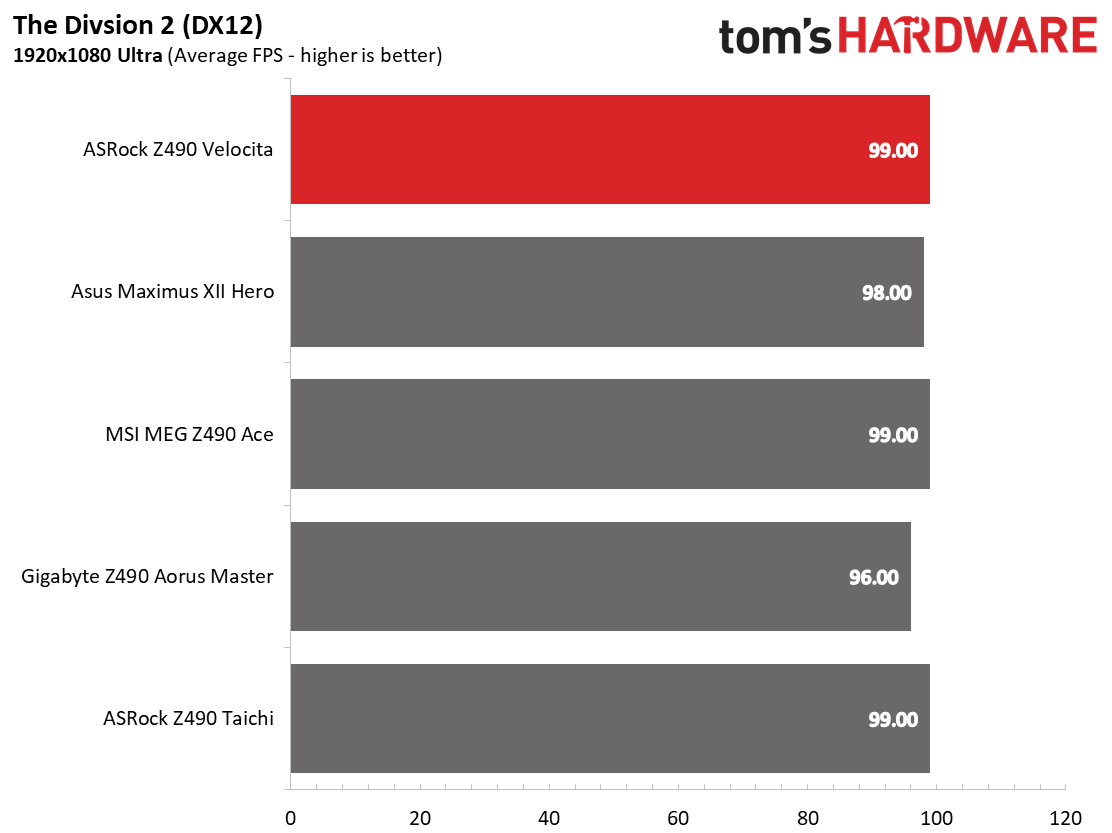
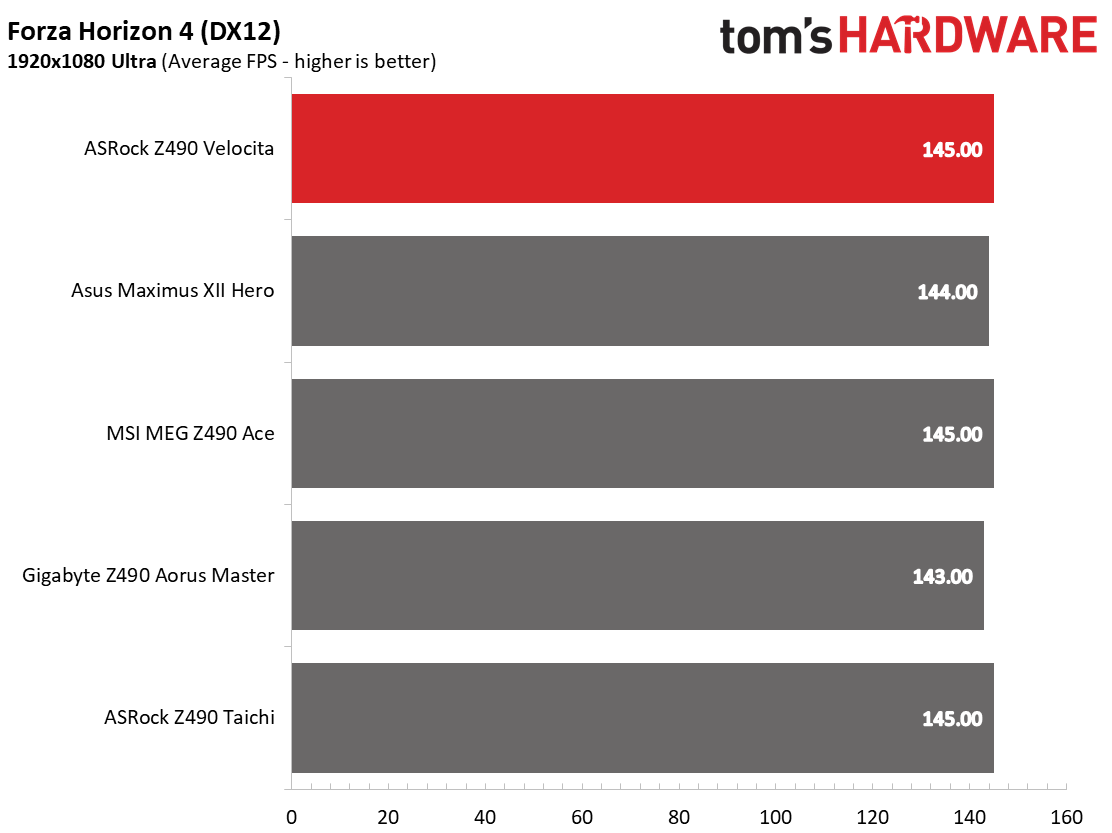
We’ve recently updated our game tests to more modern titles The Division 2 and Forza Horizon 4. The games are run at 1920x1080 resolution using the Ultra preset. As the resolution goes up, the CPU tends to have less of an impact. The goal with these settings is to determine if there are differences in performance at the most commonly used resolution with settings most people use/strive for.
In both titles, we saw less than a 1% difference between all the boards we’ve tested so far. Nothing out of the ordinary here.
Get Tom's Hardware's best news and in-depth reviews, straight to your inbox.
Power Consumption / VRM Temperatures
Our first glimpse of power use for this platform and the 10c/20t i9-10900K may be a bit shocking to some. With loads reaching 250W-290W, many users will be hard-pressed to keep these cool and get the most out of the chip. For power testing, we used AIDA64’s System Stability Test with Stress CPU, FPU and Cache enabled using peak power consumed. The wattage value is taken from the wall via a Kill-A-Watt meter to capture the entire ecosystem; the only variable that changes is the motherboard.
The ASRock PG Velocita idled at 57W and used 290W while under load, the latter the most power use of the compared boards. Actual wattage for the CPU according to HWInfo64 approached 215W. Other boards used slightly less power though speeds were also lower, accounting for much of the difference.
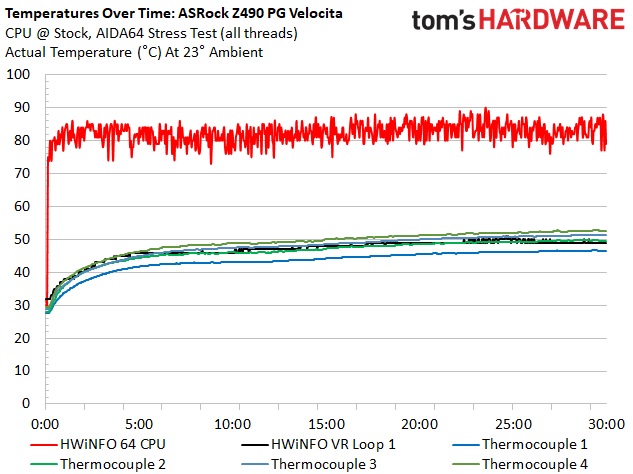

For VRM testing, the Velocita’s large heatsinks and active cooling managed the temperatures well keeping them within operating parameters at both stock and while overclocked to 5.2 GHz. Peak temperatures at stock reached 53 degrees Celsius while overclocked temps reached 58 degrees Celsuis in our 30 minute test (the curve flattens out at this point). The three small fans kept the temperatures low in our testing environment (an open air test bench with no active cooling), but were clearly audible throughout testing, especially while overclocked.
Overclocking
With this being our first motherboard review using the new 10th Generation Intel i9-10900K CPU, we fiddled around and found for the test run and cooling used, our limit is around 1.35V. This voltage limit yields a 5.2 GHz overclock with temperatures peaking around 95C.
Running 5.2 GHz and 1.35V using all 10 cores and 20 threads, we are able to run the AIDA64 System Stress test for 30 minutes. With LLC set to auto (Level 4), there was some vdroop, but this was easily mitigated by setting the LLC higher to Level 1. At this setting, the voltage was stable, moving from idle to load, and the VRM handled the power-hungry CPU without flinching. The fans on the VRM dutifully, and audibly, kept them running well within specification.
On the memory side, we swapped out the GSkill Trident Z Neo DDR4 3600 sticks with a Trident Z Royal kit rated at DDR4 4000. I was unable to stabilize 4x8GB at that speed, but the 2x8GB DDR4 4000 wasn’t a problem.
Final Thoughts
The ASRock X490 PG Velocita is priced at $259.99 on Newegg, which is somewhere around the middle of all Z490 motherboard prices. This board directly competes with the likes of Asus ROG Strix Z490-F Gaming ($269.99), MSI MPG Z490 Gaming Carbon WiFi ($269.99), and the Gigabyte Z490 Aorus Pro AX ($269.99). Between these similarly priced boards, the difference breaks down to VRM capability (all will be fine), feature set, and appearance. The Velocita is currently $10 cheaper, so if all parts are equal, why not save $10?
During our time with the board, the Velocita showed off its mettle, able to keep up with the notably pricier motherboards we’ve compared it against so far. In fact, it was one of the better-performing boards overall, though in most tests, users will find it difficult to discern performance between them without benchmarks. On the features front, this board has plenty of what are likely to be looking for. You get solid power delivery, dual M.2 slots, eight SATA ports, 2.5 GbE LAN, premium audio, and even PCIe 4.0 support. Overall, this is a well-rounded board.
Our overclocking adventures yielded 5.2 GHz at 1.35V and DDR4 4000 RAM though that was with temperatures reaching 100C -- the end of the road thermally unless you have beefier cooling than our substantial 360mm Corsair H150i. The board and its capable VRM didn’t have an issue at these settings as the three tiny VRM fans kept the large heatsinks running cool, though at the expense of noise. The specifications/features mention these are disabled at low loads/idle, but ours did not behave this way and were constantly on. A last-minute answer from ASRock indicates switching to Silent mode will fix this, although if you’re pushing a high-end CPU past its stock operation, you’re definitely going to be living with some audible VRM fan noise.
In the end, ASRock’s Velocita is a solid mid-range option for your shiny new 10th Generation Intel system. While it may be a bit short on the rear IO for USB ports, the overall feature set including its capable power delivery and eight SATA ports, makes it an appealing option in this price segment.
MORE: Best Motherboards
MORE: How To Choose A Motherboard
MORE: All Motherboard Content
Current page: Benchmark Results and Final Analysis
Prev Page Test System and Comparison Products
Joe Shields is a staff writer at Tom’s Hardware. He reviews motherboards and PC components.

